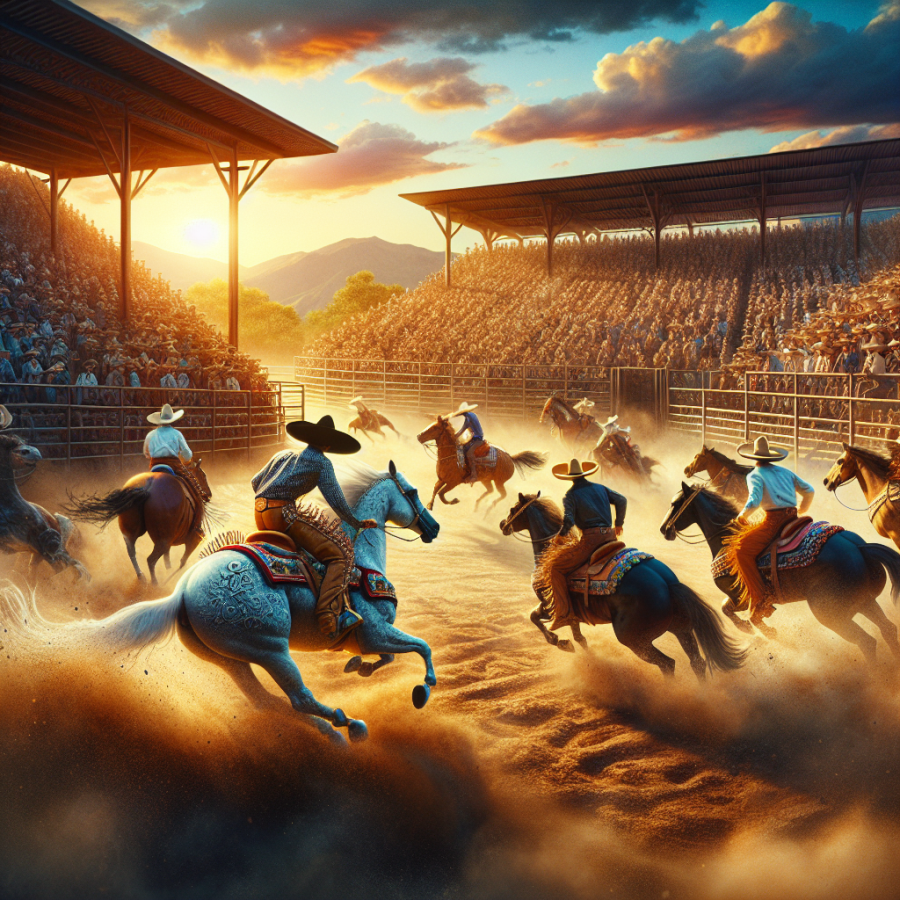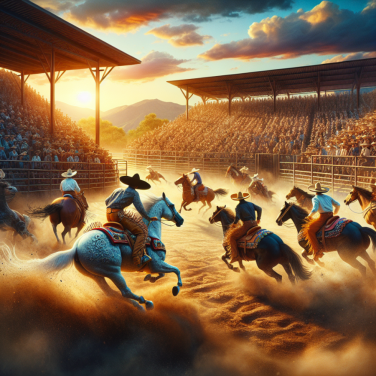The Historical Roots of Charreada: Mexico's National Sport
Charreada, often referred to as Mexico's national sport, is deeply woven into the fabric of Mexican history, culture, and tradition. This equestrian event traces its roots back to the 16th century and the period of Spanish colonial rule. During this time, haciendas, or large estates, were the cornerstone of the region's rural economy and culture. The landowners and ranch workers needed exceptional skills in horse riding and livestock handling to manage the cattle and horses that were an integral part of hacienda life.
The expertise developed by the Mexican charros, or horsemen, came from a blend of indigenous horsemanship traditions and the riding and roping techniques brought by the Spanish conquistadors. Over time, the charros became highly skilled in an array of equestrian practices necessary for the management of the haciendas.
As these skills became more refined, informal competitions arose among the charros. These contests were initially practical demonstrations of the charros’ abilities in horseback riding, cattle roping, and various other ranching tasks. They were also a form of entertainment and celebration, often coinciding with religious festivals, cultural ceremonies, and local fairs.
By the 19th century, these activities began to formalize into what is now known as charreada. Following the Mexican Revolution, the hacienda system underwent significant changes, but charreada endured and evolved. The sport gained an organized structure and rules, with the first official charro organization, the Asociación Nacional de Charros, being founded in 1921 to define and regulate the events.
In the charreadas of today, participants compete in a series of events that showcase the traditional skills of the charro. These include intricate maneuvers on horseback, the ability to rope cattle rapidly and efficiently, and other tests of horsemanship honed over centuries. With costumes that reflect the elaborate designs of historical charro attire, competitors pay homage to the cultural legacy of the sport.
Each charreada is a living history lesson. The clothing, saddles, and tack are often handcrafted, true to the original designs and methods of the colonial and post-colonial periods. Through charreada, the artistry of Mexico's leatherwork and embroidery, two more deeply-rooted cultural traditions, is also celebrated.
Importantly, charreada is not solely a sport of nostalgia or historical reenactment. It continues to be a vibrant, living tradition.
Read also:
Harnessing the Ancient Art: An Exploration of Kung Fu Mastery
The Role of Charros and Escaramuzas in Preserving Charreada Traditions
Charreada, the traditional Mexican sport often compared to rodeo, has woven an intricate part of Mexico's cultural tapestry for centuries. Central to this heritage are the charros and escaramuzas, the skilled horsemen and horsewomen who practice and perform the various events that make up the charreada.
Charros are often seen as the embodiment of Mexican masculinity and chivalry. Their role extends far beyond mere participants in a sport. As custodians of charreada traditions, charros are deeply committed to the maintenance of horsemanship skills passed down through generations. The iconic charro attire, complete with ornate sombreros, bolero-style jackets, and tightly fitted trousers, is not just about aesthetics; it is steeped in historical significance, symbolizing a deep respect for the cultural norms and practices that define charreada.
In charreada, charros perform a series of daring and highly skilled maneuvers, ranging from lazo or lasso skills to cala de caballo, a demonstration of horse reining. The horse is not only a partner in these events but also a reflection of the charro's proficiency and pride. One of the most dramatic events is the paso de la muerte, or "pass of death," where a charro attempts to leap from his own galloping horse to the bare back of a wild horse without saddle or reins. This feat exemplifies the dangerous yet artistic nature of the charreada and the bravery of the charros.
Meanwhile, escaramuzas, the female counterparts in the charreada, offer a display of grace and precision that is equally critical to the tradition. Traditionally, escaramuzas wear intricately embroidered dresses reminiscent of the attire worn by the adelitas, or female soldiers of the Mexican Revolution. Mounted on sidesaddles, these women perform carefully choreographed routines that bring to life the spirit and festivity of the Mexican fiesta. They ride in teams, executing complex maneuvers at a full gallop, weaving and crossing paths with precision timing, all the while maintaining the poise and elegance central to their role in the charreada.
The escaramuzas are more than performers; they are educators and role models. They hold a significant place in preserving the equestrian traditions of Mexico and inspire young girls to take up the sport, ensuring that the legacy of charreada continues and evolves with the times.




